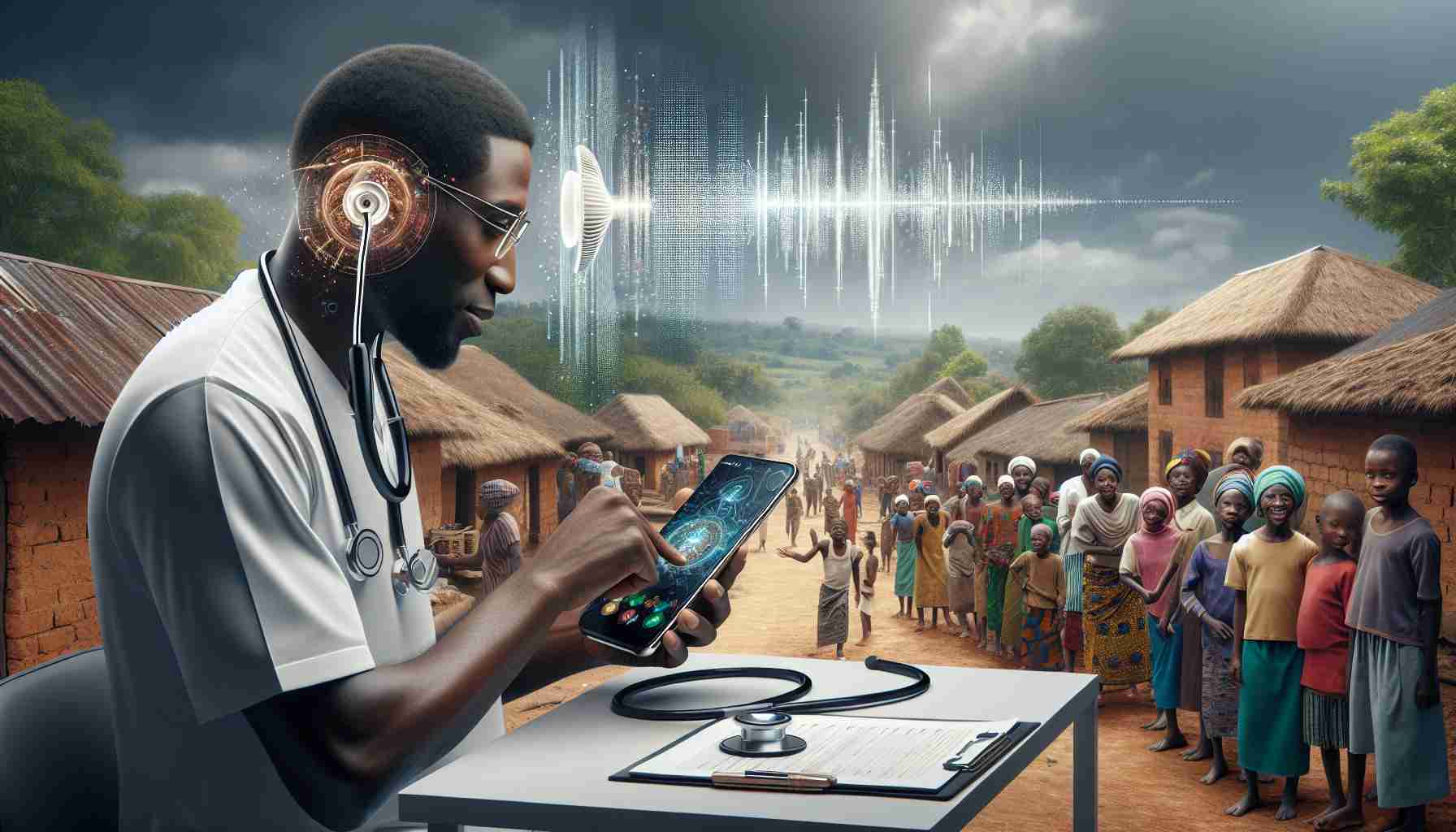**Smartphone Technology Advances Ear Health in Africa**
An innovative software application is transforming average smartphones into basic diagnostic tools for hearing assessments, offering hope to the 136 million Africans suffering from hearing loss. With this groundbreaking development, smartphones are proving vital in the preliminary screening of hearing capabilities and identifying those in need of comprehensive audiological evaluations.
This tech-centric approach aligns with the global trend of leveraging innovation to overcome healthcare barriers, particularly in areas where medical facilities are in short supply. The application empowers non-specialists with the ability to conduct initial screenings, streamlining the pathway to specialized care for patients and potentially altering the lives of millions who might otherwise face challenges in obtaining accurate diagnoses and treatment for their hearing conditions.
The introduction and spread of such technological applications are essential steps toward resolving the hearing health crisis across the continent. Not simply a quick fix, this app represents the beginning of a more extensive strategy that encapsulates several aspects of healthcare delivery.
**Smartphone App: A Partner in Tackling Hearing Loss**
This inventive app allows laypersons to use pervasive mobile devices for the initial detection of hearing problems, significantly democratizing healthcare access. While the advantages of this application, such as wider accessibility, affordability, and early intervention, are clear, it confronts hurdles like ensuring smartphone access, educating users, and handling linguistic and cultural differences. Subsequent care, necessary after screening, may also pose logistical and financial difficulties, particularly in isolated regions.
Despite the potential, the accuracy of app-based assessments as opposed to conventional methods remains a point of discussion, with concerns about data privacy and ensuring equitable access irrespective of economic status also at the forefront.
The double-edged sword—the pros and cons of using smartphone applications for hearing health—paints a complex yet optimistic picture. Benefits include increased availability and cost savings, early detection leading to better treatment, and community empowerment through technology. Challenges include accuracy in non-professional settings, infrastructure for ongoing care, protection of sensitive health data, and overcoming the digital divide to ensure the success of the application.
Global organizations like WHO and GSMA offer insights into healthcare and technology’s convergence, notably how smartphones are changing healthcare interventions. One should always validate the security and URL accuracy of websites due to the potential for changes over time.
Important Questions and Answers:
1. How can smartphone technology improve ear health in Africa?
Smartphone technology can improve ear health in Africa by enabling widespread preliminary hearing screenings, making healthcare more accessible, and providing a cost-effective method for early detection of hearing issues.
2. What are the challenges associated with using smartphone technology for hearing assessments?
Challenges include ensuring access to smartphones, training users, managing linguistic and cultural hurdles, maintaining the accuracy of app-based assessments, providing ongoing care after screening, protecting sensitive health data, and making the app accessible regardless of economic status.
3. Is the accuracy of smartphone-based hearing tests on par with traditional methods?
The accuracy of smartphone-based hearing tests may not be equivalent to traditional methods conducted by professionals, which is a point of discussion. It varies depending on the app’s design, the phone’s hardware, and the environment where the test is conducted.
Key Challenges and Controversies:
One controversy is the efficacy and accuracy of app-based tests compared to those administered by healthcare professionals. Critics may argue that smartphone-based assessments are less reliable, potentially leading to false positives or negatives, which could affect the patient’s care pathway.
Another key challenge is bridging the digital divide. In Africa, where smartphone penetration is increasing but still not universal, there are disparities in who can access this technology, potentially exacerbating existing inequalities in healthcare.
Data privacy is also a significant concern, as the application will collect sensitive health information that needs to be securely stored and managed to protect patient privacy.
Advantages:
– Accessibility of ear healthcare for communities with limited medical infrastructure.
– Affordability compared to traditional diagnostic tools and procedures.
– Potential for early intervention, which can significantly improve treatment outcomes.
– Empowerment of local communities through technology.
Disadvantages:
– Possible accuracy issues in non-clinical environments, leading to misdiagnosis.
– Dependence on smartphone access, which is not universal.
– Training and educating the population to effectively use the application.
– Ensuring availability of further medical care after initial screening.
– Addressing data privacy and digital security concerns.
For more information on health and technology, you may visit the World Health Organization website WHO and GSMA, which represents the interests of mobile operators worldwide, for insights into mobile technology-related to healthcare GSMA.
